Mary Beth Edelson: Activism and International Feminist Collaborations
Activism
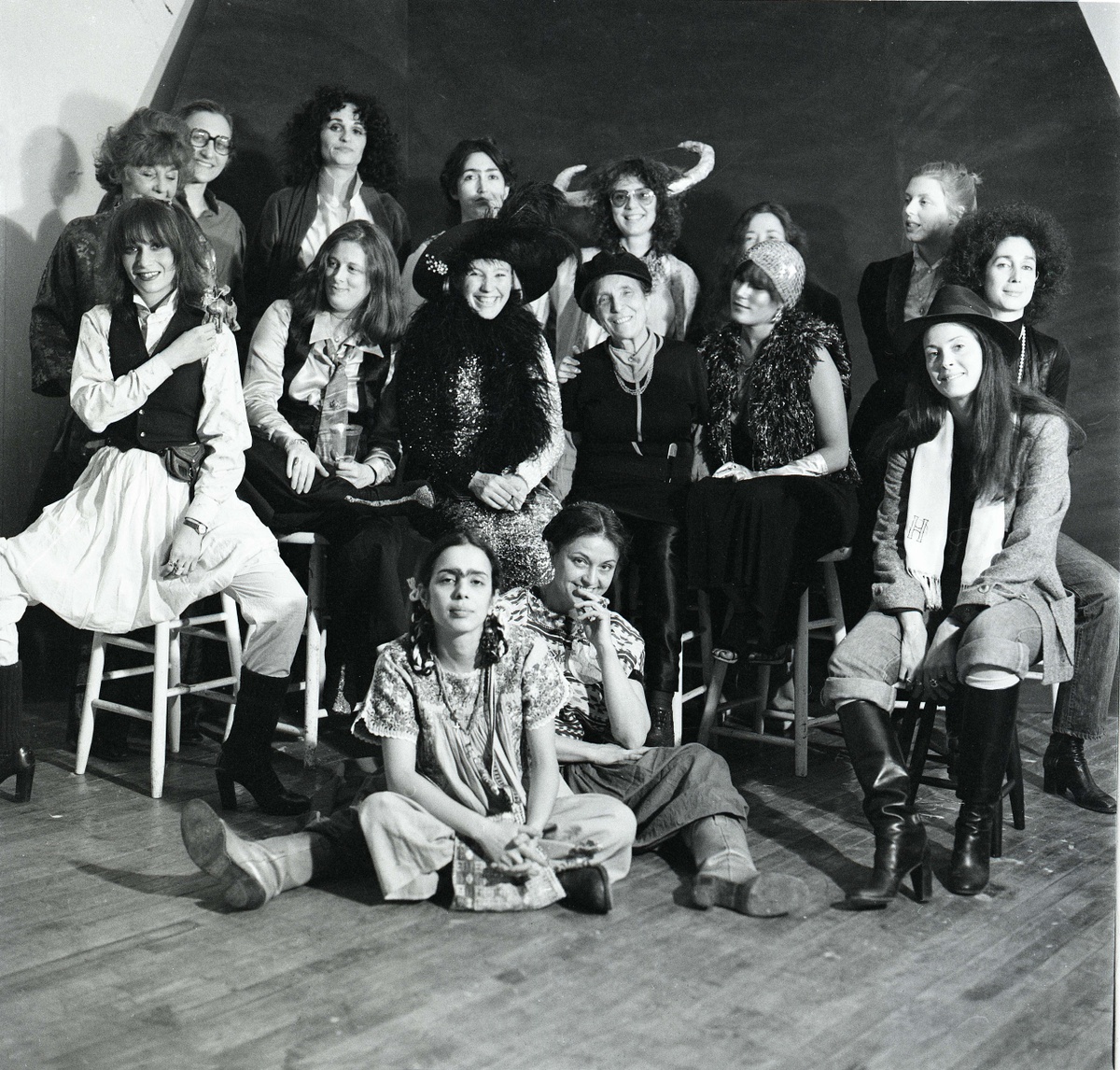
Copyright held by the Estate of Mary Beth Edelson; preserved through a partnership with The Feminist Institute. See record
Throughout Edelson’s prolific career, she has been a committed activist for women and women artists. She participated and photographed numerous events at museums and galleries protesting the lack of representation of women artists such as the 1976 event at the Museum of Modern Art.
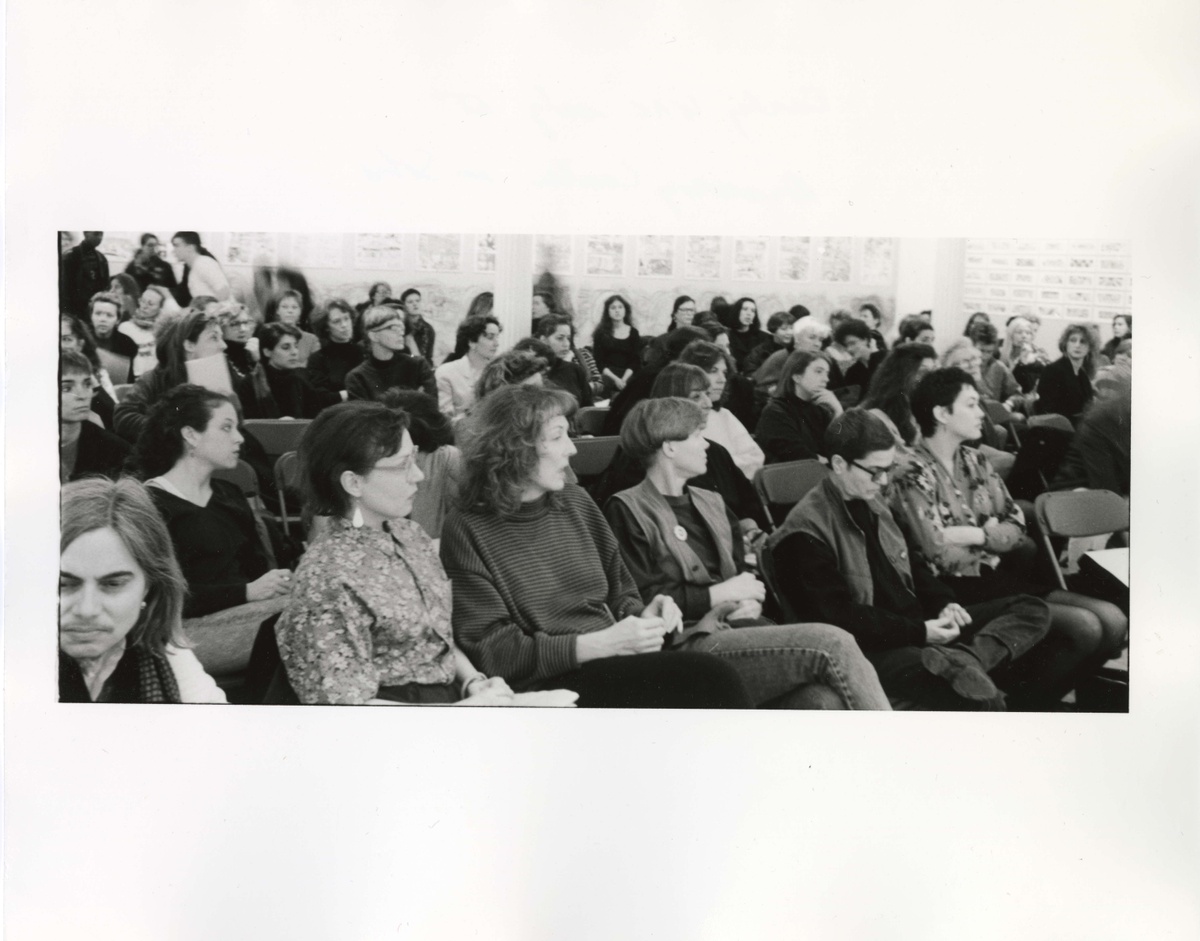
Copyright held by the Estate of Mary Beth Edelson; preserved through a partnership with The Feminist Institute. See record
Edelson was an active member of WAC formed in response to several events including the confirmation of Clarence Thomas to the Supreme Court and a number of gang rape trials.
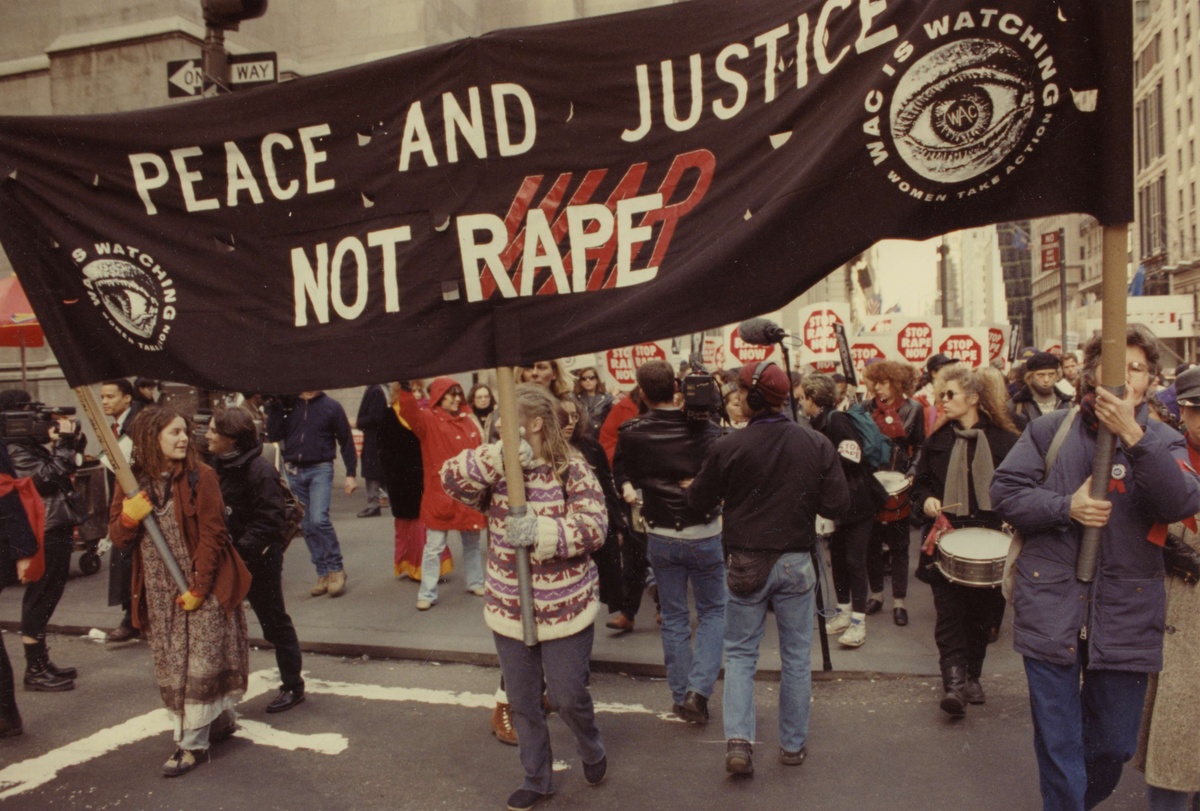
Copyright held by the Estate of Mary Beth Edelson; preserved through a partnership with The Feminist Institute. See record
Membership grew to 3,000 in New York City (active January 1992 to November 1995) and Edelson participated in events and photographed many of their actions that brandished the slogan “WAC is watching, women take action.” WAC activities and protests addressed issues of oppression of women, people of color, and those who identify as queer.
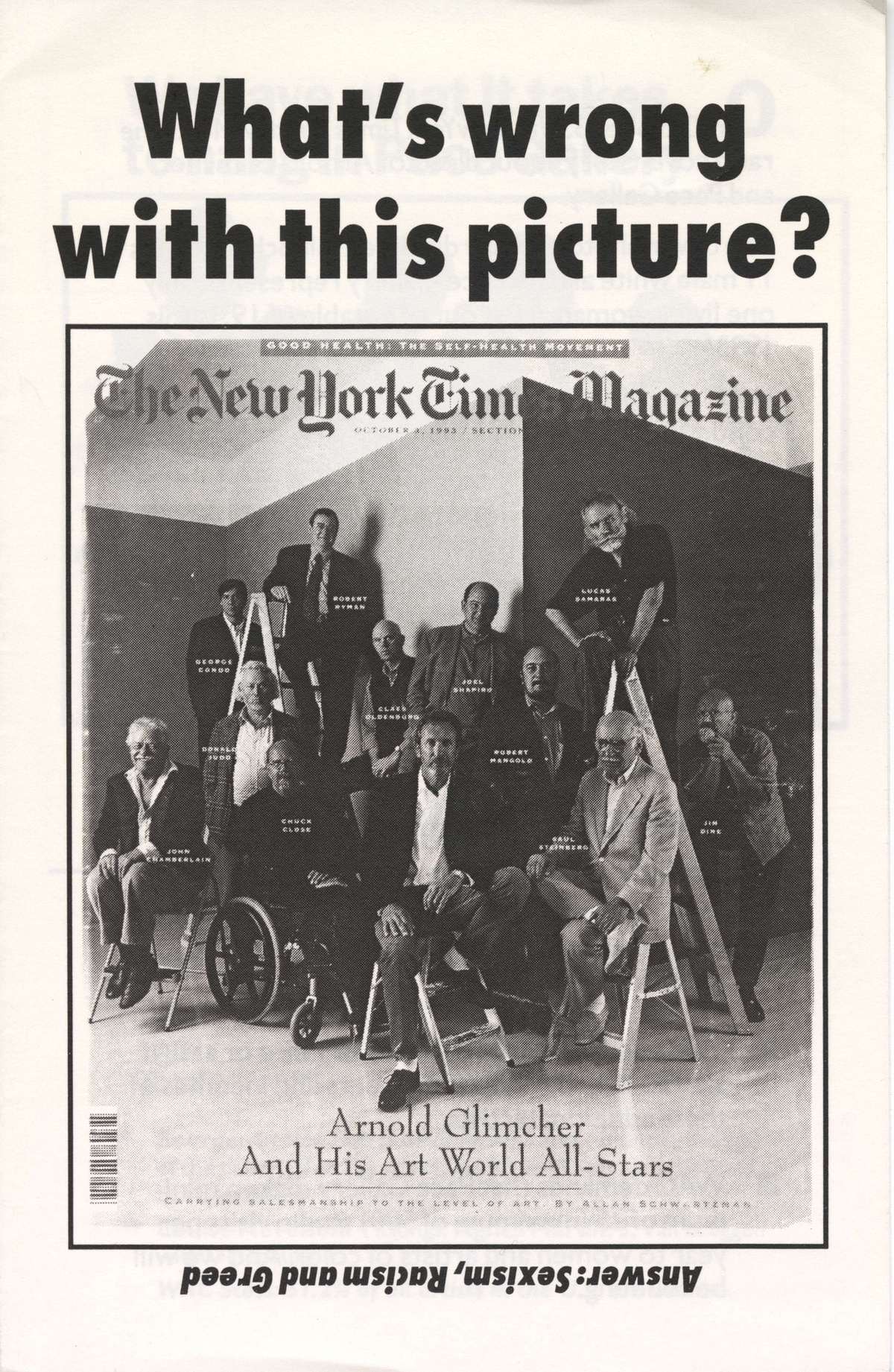
Copyright held by the Estate of Mary Beth Edelson; preserved through a partnership with The Feminist Institute. See record
These WAC images include a meeting at the Drawing Center, a march against rape, and a 1993 protest sign aimed at Pace Gallery in which Edelson made a poster using The New York Times Magazine cover of all the white men represented at the gallery.
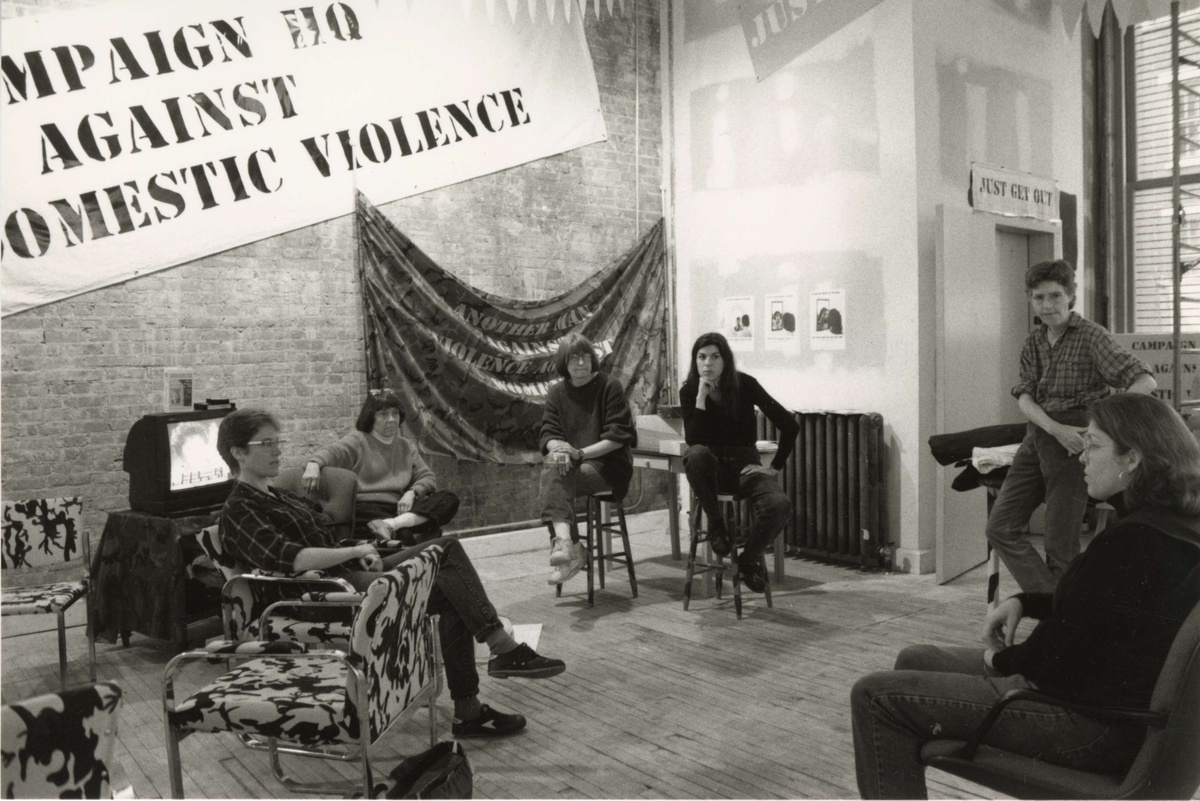
Copyright held by the Estate of Mary Beth Edelson; preserved through a partnership with The Feminist Institute. See record
In 1994 with the support of Creative Time, Edelson established “Combat Zone: Campaign Headquarters Against Domestic Violence” to develop self-defense workshops for victims of domestic violence. This three-month project provided classes for local women and provides a model for others around the country.
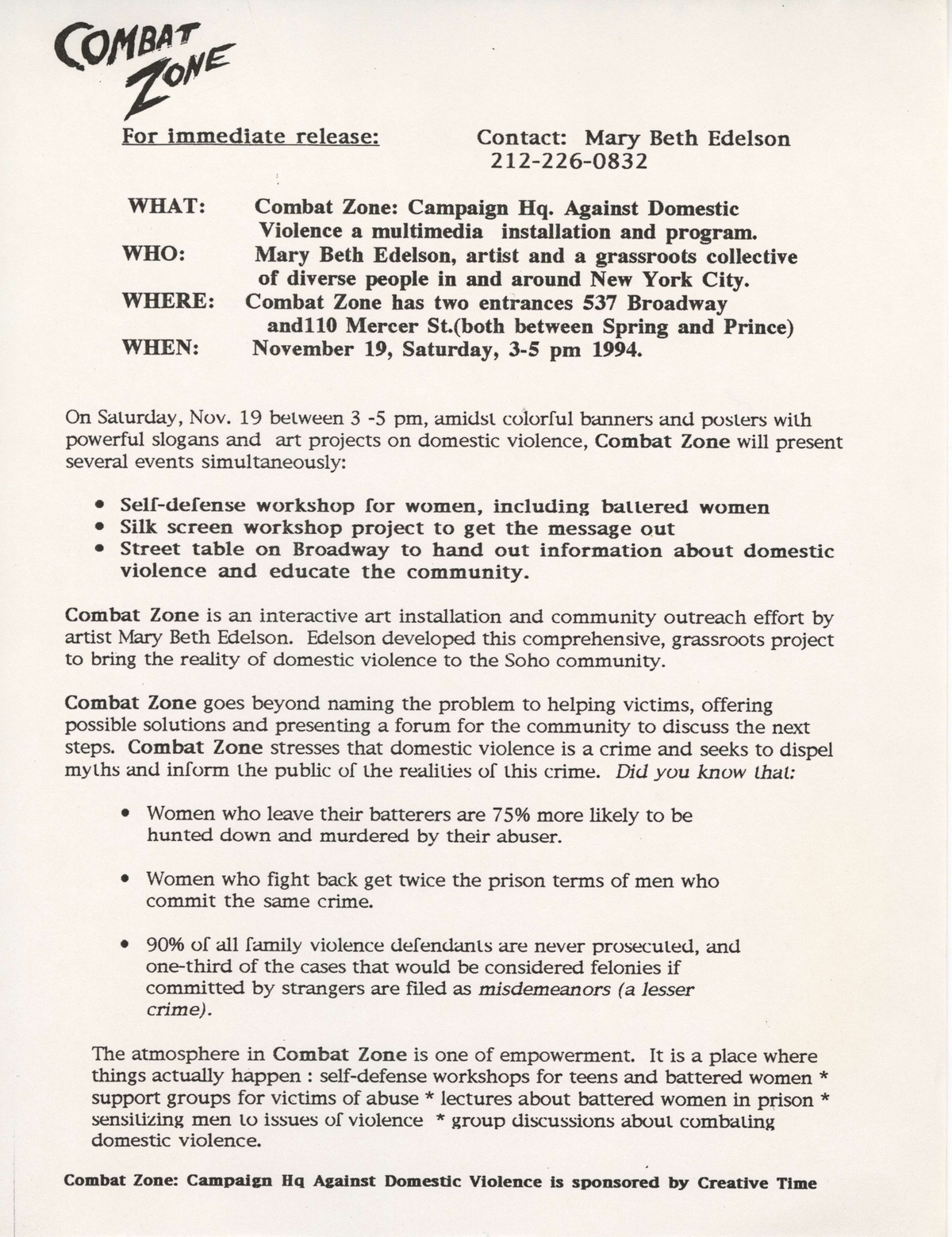
Copyright held by the Estate of Mary Beth Edelson; preserved through a partnership with The Feminist Institute. See record
Additional programming focusing on women in prisons, violence against the queer community, and the first online conference on domestic violence. Edelson has noted that many friends and WAC members assisted in the undertaking including Janet Henry and Diane Dwyer
International Feminist Collaborations with Suzanne Lacy, Mary Beth Edelson, Nil Yalter, Ulrike Rosenbach, and Miriam Sharon, documented by Mary Beth Edelson
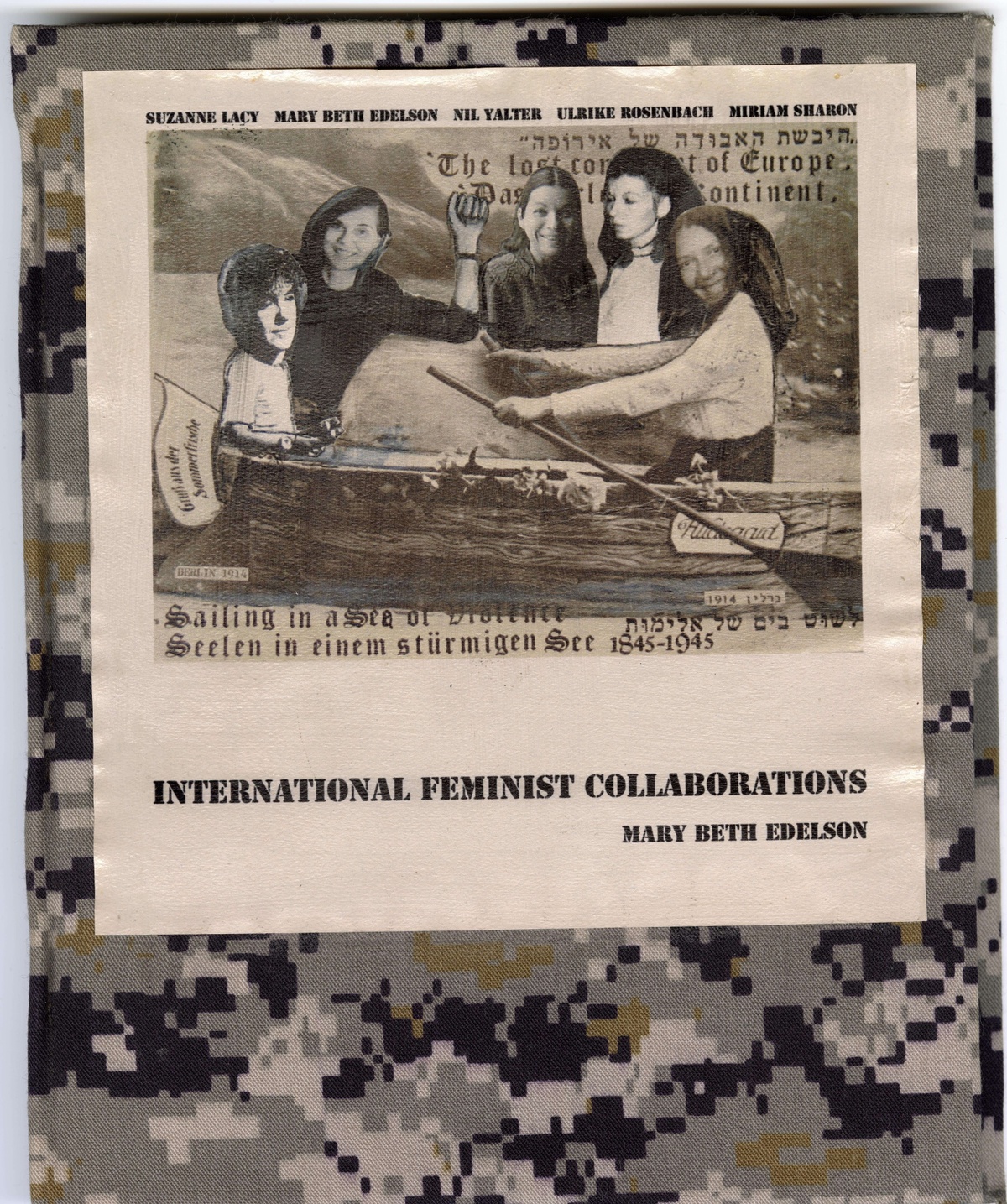
Copyright held by the Estate of Mary Beth Edelson; preserved through a partnership with The Feminist Institute. See record
This impulse is evident in the “International Feminist Collaborations” project in which she connected with artists in 1977 that included Suzanne Lacy (Los Angeles), Nil Yalter (Turkey, living in France), Ulrike Rosenbach (Germany), and Miriam Sharon (Israel). This collaboration was documented by Edelson in a 2003 self-created book and includes an introduction on the group’s formation, correspondence among the five artists, and documentation on their proposal for a collaborative exhibition at the Centre Pompidou in Paris. Of note, is a letter Edelson wrote to her collaborators, one of the many documents the Fales Art Library at New York University now has in its collections and is included in her IFC documentary book. This select letter illustrates the extent of the ideas exchanged among the artists as Edelson writes to all the collaborators about their ideas and potential projects.
Throughout her career, Edelson has sought out collaborators or organized others to make a difference, as she has often said “If you want to get anything done, form a group.”
In the Introduction to this documentary book written after their original exchanges, Edelson (with editing by Lacy) wrote that they were seeking international collaborations with like-minded feminist artists: “As a group we sought each other out based on our common interests in sociologically based art concepts, with particular focus on contemporary mobile cultures including Bedouin Nomads, Anatolian Turkish immigrants, US inner city homeless, and our own evolving international network of feminist artists. We viewed our group as a metaphor for the nomadic experience, since feminist artists had begun to travel from one city or country to another to seek out and create a ‘tribal’ feminist network.” (Edelson, 2003, 3) Edelson has used the term tribe or tribal as a way to describe groups of women or representations of women that were such a significant aspect to her work and organizing as a feminist activist and artist. The group’s project for the Centre Pompidou was to establish a temporary community for which each artist would build their own shelter, remain for the duration of the performance, and rely of the public for necessities such as food. The collective living environment of women artists would be on display, as well as the social interactions among them while each produced their own work. The habitats and detritus left behind would act as documentation of the piece. Edelson wrote, “Our curiosity about our personal and group limits made us willing to radically position our bodies in public. Besides, we were performance artists, immersed in an understanding of how our bodies were representative of conditionings and readings and subject to forces often far beyond our individual lives. The subversive nature of this venture lay in unblocking boundaries, and in producing new social contracts,” as they were to rely on the public for necessities and interaction. (Edelson, 2003, 4) While the IFC proposal was never realized, Edelson found the collaboration among the artists a significant part of the historical record of feminist art during the 1970s to compile the documents decades later into a book, but also because she felt the issues confronted continued to be pressing as these five women represented Christian, Jewish, Muslim, and Atheist backgrounds.





